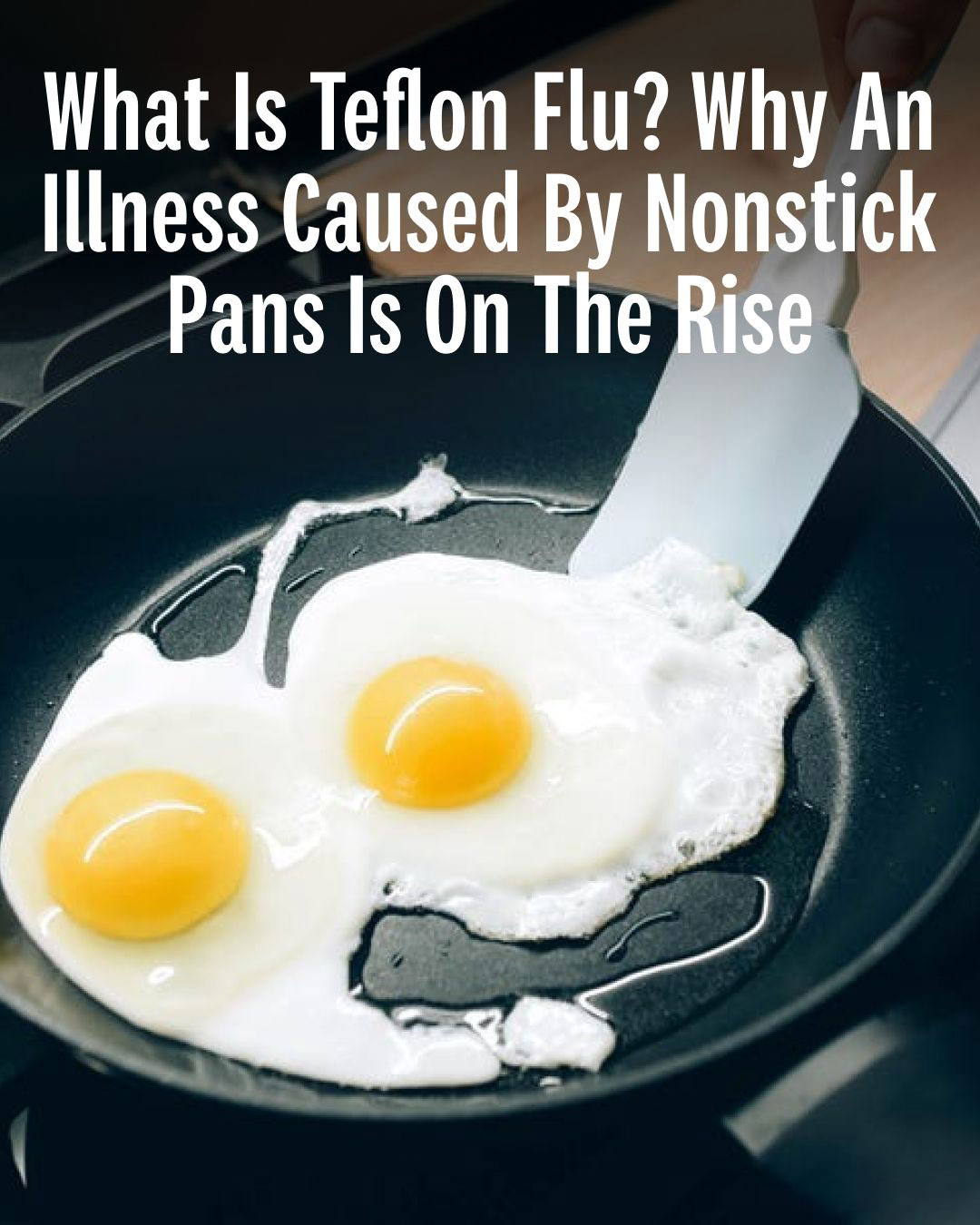First produced in the 1930s, Teflon pans have grown in popularity over the years. This is due to their convenient non-stick surfaces that are easy to clean and require less oil or butter to cook. [1] However, these pans have also been linked to certain health issues, such as polymer fumer fever or ‘Teflon flu’. In fact, the U.S. Poison Control Centers received 267 reports of polymer fume fever in 2023 alone. However, some of these reports may have been from individuals exposed to these chemicals at work.
The Rise of Teflon Flu Cases

While it may be difficult to determine exactly how many Americans are affected every year, the reported cases in 2023 tripled in numbers compared to previous years. Many people don’t even know that their illness is caused by using Teflon pans, as the symptoms resemble other illnesses. Teflon flu refers to the symptoms individuals experience after being exposed to PTFE (polytetrafluoroethylene) fumes. These fumes are from the polymer coating used on the pans to produce their non-stick surface. This polymer coating also makes these pans easier to clean. However, these pans can release toxic chemical gasses even when cooked at normal temperatures. [2]
The Symptoms of Teflon Flu

People have reported several common symptoms after being exposed to the fumes of Teflon-coated cooking products. [3] These fumes are not only harmful to humans but can be toxic to animals too. These symptoms usually persist for a couple of days and include:
- fever
- headache
- muscle aches or cramps
- shivering or chills
- coughing
- Weakness
- bad or unpleasant taste
- nausea
- thirst
- Sweating
The Safe Use of Teflon Products

It is advised to always follow the recommended temperature provided with your cooking products, never exceeding 500 degrees Fahrenheit. Overheating Teflon pans is what causes the coating to break down and release toxic fumes. Rather use low to medium heat settings, and never preheat an empty Teflon pan. It is also important to always make sure your cooking area is well-ventilated. This will help disperse any fumes released while cooking. Avoid using metal utensils when you are cooking, as these can scratch the Teflon coating. Rather use utensils made from silicone, wood, or plastic. Also stay away from abrasive cleaning tools, as these too can damage the coating. If your current cookware is scratched or damaged, rather play it safe and replace it with new versions.
The Details of a Reported Teflon Flu Case

The NIH published a report of a man who exhibited Teflon flu symptoms in December 2012. According to the report, at around 11:00 a.m., the man put a pot of water on his stove and proceeded to fall asleep waiting for it to boil. He woke up five hours later to a room full of white smoke. He then tried to put out the fire and ran water over the pot in the sink. As the water hit the pan, fumes began to rise from the pan, which he accidentally inhaled.
A few hours later he went to the hospital as he was coughing and having problems breathing. He showed the doctors at the hospital a photo of the pan, and they determined he was suffering from Teflon flu. He was kept at the hospital overnight and hooked up to an oxygen tank. By the second, he was showing significant improvement, and all of his symptoms were gone by the third day.
The Dangers of PFOA Exposure

Concerns were also raised over the use of PFOA (perfluorooctanoic acid) for coating pans. However, while PFOA was used in Teflon production until 2013, today all Teflon pans are free of this chemical. Although the PFOA was mostly eliminated at high temperatures during manufacturing, a small trace could still be found in the final product. PFOA exposure has been connected to health conditions such as chronic kidney disease, thyroid disorders, infertility, and birth weight. [4] It can also cause liver disease and testicular disease. If you have a Teflon pan made before 2013, it is recommended that you replace it.
The Bottom Line

PTFE and PFOA chemicals have been shown to cause health issues in humans and animals. They are also very prevalent, with PFOA found in the blood of 98% of the group that partook in the U.S National Health and Nutrition Examination Survey from 1999 to 2000. When your cookware begins to show signs of deterioration, it is recommended that you replace it as soon as possible. Always only use the cookware at the recommended temperatures. If you show any symptoms of Teflon fume inhalation, visit a doctor immediately! These symptoms include fatigue, dizziness, coughing, and issues breathing.
